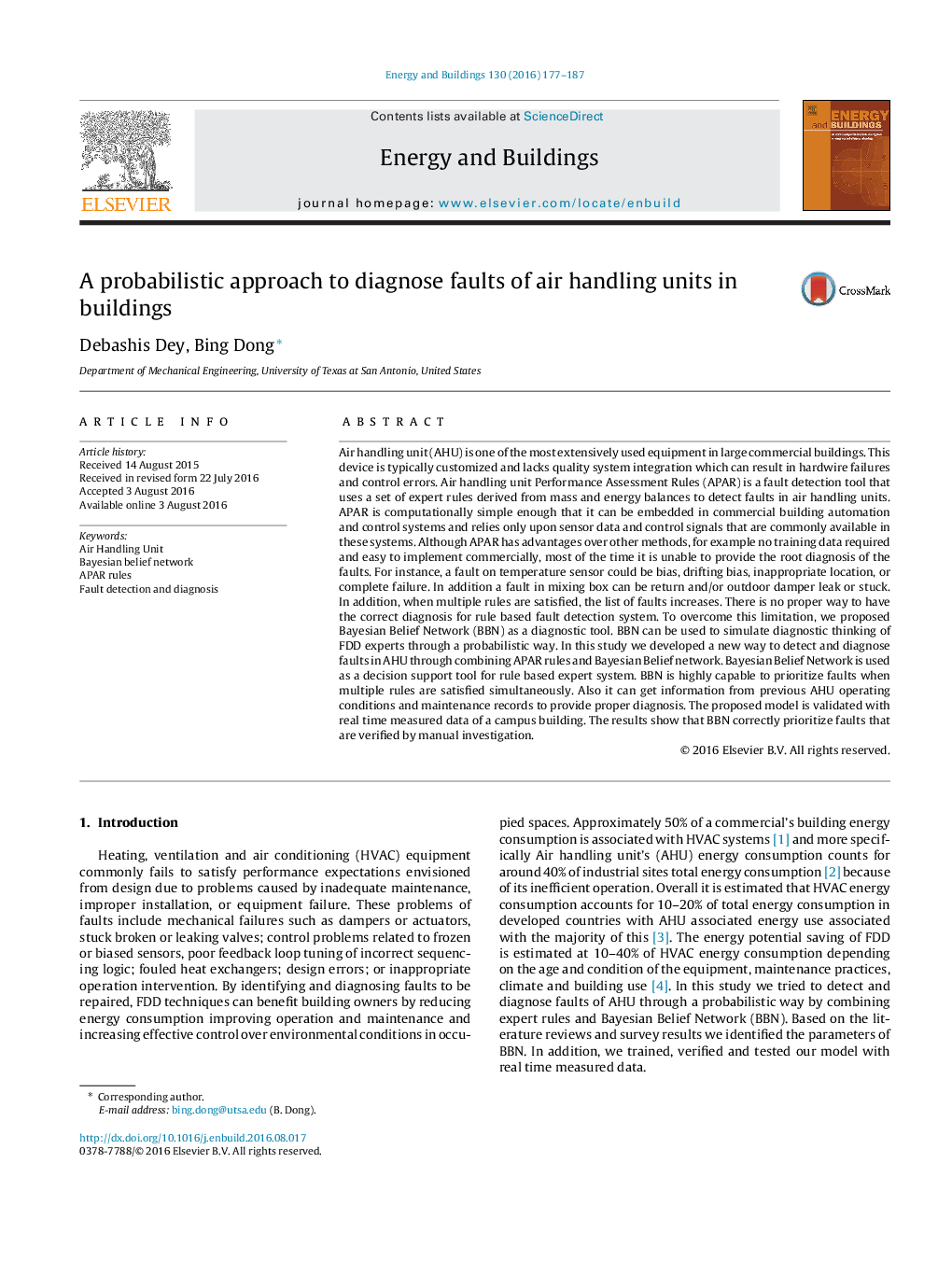| کد مقاله | کد نشریه | سال انتشار | مقاله انگلیسی | نسخه تمام متن |
|---|---|---|---|---|
| 4919585 | 1428960 | 2016 | 11 صفحه PDF | دانلود رایگان |
عنوان انگلیسی مقاله ISI
A probabilistic approach to diagnose faults of air handling units in buildings
ترجمه فارسی عنوان
یک روش احتمالاتی برای تشخیص گسل های واحدهای بارگیری هوا در ساختمان ها
دانلود مقاله + سفارش ترجمه
دانلود مقاله ISI انگلیسی
رایگان برای ایرانیان
کلمات کلیدی
موضوعات مرتبط
مهندسی و علوم پایه
مهندسی انرژی
انرژی های تجدید پذیر، توسعه پایدار و محیط زیست
چکیده انگلیسی
Air handling unit (AHU) is one of the most extensively used equipment in large commercial buildings. This device is typically customized and lacks quality system integration which can result in hardwire failures and control errors. Air handling unit Performance Assessment Rules (APAR) is a fault detection tool that uses a set of expert rules derived from mass and energy balances to detect faults in air handling units. APAR is computationally simple enough that it can be embedded in commercial building automation and control systems and relies only upon sensor data and control signals that are commonly available in these systems. Although APAR has advantages over other methods, for example no training data required and easy to implement commercially, most of the time it is unable to provide the root diagnosis of the faults. For instance, a fault on temperature sensor could be bias, drifting bias, inappropriate location, or complete failure. In addition a fault in mixing box can be return and/or outdoor damper leak or stuck. In addition, when multiple rules are satisfied, the list of faults increases. There is no proper way to have the correct diagnosis for rule based fault detection system. To overcome this limitation, we proposed Bayesian Belief Network (BBN) as a diagnostic tool. BBN can be used to simulate diagnostic thinking of FDD experts through a probabilistic way. In this study we developed a new way to detect and diagnose faults in AHU through combining APAR rules and Bayesian Belief network. Bayesian Belief Network is used as a decision support tool for rule based expert system. BBN is highly capable to prioritize faults when multiple rules are satisfied simultaneously. Also it can get information from previous AHU operating conditions and maintenance records to provide proper diagnosis. The proposed model is validated with real time measured data of a campus building. The results show that BBN correctly prioritize faults that are verified by manual investigation.
ناشر
Database: Elsevier - ScienceDirect (ساینس دایرکت)
Journal: Energy and Buildings - Volume 130, 15 October 2016, Pages 177-187
Journal: Energy and Buildings - Volume 130, 15 October 2016, Pages 177-187
نویسندگان
Debashis Dey, Bing Dong,
